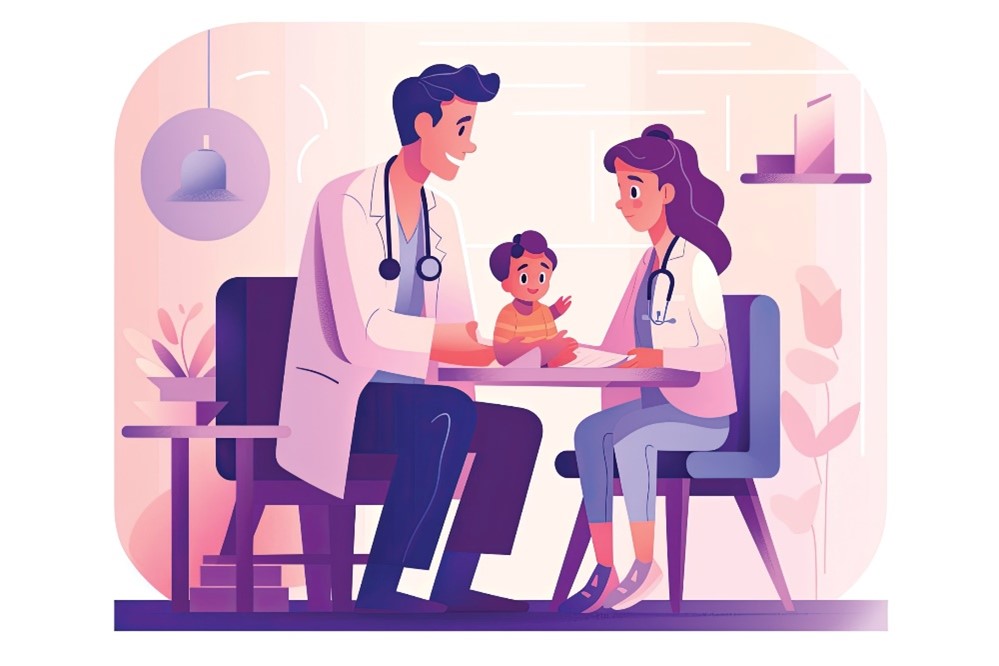
While being diagnosed with an autoimmune condition in childhood can be distressing, an early diagnosis may be better in the long run, especially for conditions that worsen over time when left untreated, like Hashimoto’s disease.
Since Hashimoto’s thyroiditis (HT) impacts hormone production in the hormone-producing thyroid gland, its early detection in children is important to minimize its symptoms and especially its impact on hormone-driven childhood development. Fortunately, HT is treatable with nutrition, dietary supplements and if needed hormone replacement medication that can be taken long-term without harmful effects.
Dr. John Heary explores below some of the risk factors, symptoms, and treatment options for children diagnosed with Hashimoto’s.
Symptoms of Hashimoto’s in Children
Although Hashimoto’s is most commonly detected in middle-aged women, children, including newborns, may also be diagnosed. As an autoimmune disease, Hashimoto’s is caused by the body’s immune system mistakenly attacking healthy cells.
Symptoms of Hashimoto’s can vary greatly from person to person depending on the severity of the diagnosis and how far the disease has progressed, as well as other genetic and environmental factors. Some children with only a mild case of the disease may exhibit few or no symptoms.
Hashimoto’s is most commonly associated with hypothyroidism, in which the thyroid gland does not produce sufficient hormones to meet the body’s metabolic needs and regulate bodily functions. The symptoms of HT are largely similar for children and adults, and some of the most common are:
- Chronic fatigue
- Mental fog
- Constipation
- Dry skin
- Fluid retention
- Weight gain
- Depression
- Decreased body temperature
- Bodily aches
- Facial puffiness
In rare cases, children and adults with Hashimoto’s may develop a goiter, a visible swelling on the neck due to an over-enlarged thyroid gland. As childhood is a period of rapid growth and critical development, children specifically may also experience a slowed growth rate, stunted physical development, and cognitive disabilities.
Risk Factors
As the cause of Hashimoto’s is thought to be a combination of genetic and environmental factors, children with a family history of autoimmune diseases or hypothyroidism may have an elevated risk of developing Hashimoto’s.
Since being diagnosed with one autoimmune disease often increases the risk of developing one or more others, one of the biggest risk factors for Hashimoto’s in children, as in adults, is having a preexisting autoimmune condition, such as vitiligo, diabetes, multiple sclerosis, celiac disease, Addison’s disease, and rheumatoid arthritis.
By the same token, Hashimoto’s can also increase a child’s risk of being diagnosed with another autoimmune condition. It is therefore recommended that children with autoimmune disorders get regular blood tests and medical exams to detect the development of any co-occurring conditions.
Girls and women are also significantly more likely to develop the disease than boys.

Treating the Disease
While there is no known cure or effective prevention plan for Hashimoto’s thyroiditis, the condition can be effectively treated with lifestyle changes, dietary changes, and nutritional supplements and some people may also need hormone replacement medication to regulate a patient’s levels of T4, or thyroxine. Most individuals are able to take this medication safely long-term.
After starting treatment, patients will require several doctor visits and blood tests per year to monitor hormone levels and assess the need for treatment plan changes. Given the vital role that hormones play in physical and mental maturation, these tests are extremely important during the formative childhood years to decrease the likelihood of developmental abnormalities.
In addition to medical interventions, dietary changes may also help to control Hashimoto’s disease. Some patients may find that their symptoms flare after consuming gluten, dairy, or sugar and choose to limit or avoid these foods. Some examples of diets that patients may be advised to follow are:
• The Paleo Diet, which focuses on eating foods that early humans would have hunted or gathered and avoiding processed foods.
• The Anti-Inflammatory Detox Diet, which centers around fresh, whole foods and an abundance of fruits and vegetables.
• The Low Glycemic Index Diet, which aims to avoid foods that cause a spike in blood sugar.
As these diets can be difficult and restrictive to implement, it is important to seek medical guidance before making any drastic changes to a child’s diet. While going gluten free has been shown to help mediate certain autoimmune symptoms, finding what works best for each patient will likely take time and experimentation.
Conclusion
While Hashimoto’s thyroiditis is most commonly diagnosed in adults, children can also develop the condition, especially when they have a personal or family history of autoimmune disease or hypothyroidism. If left untreated, Hashimoto’s can cause developmental complications in children, but simple medical intervention can help monitor the disease and limit its progression.



